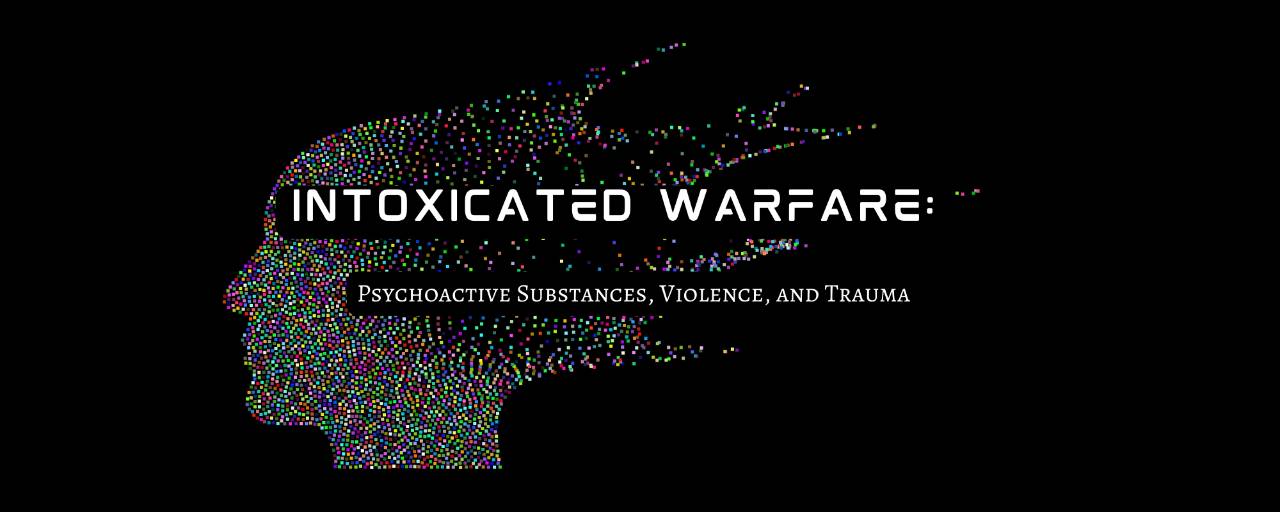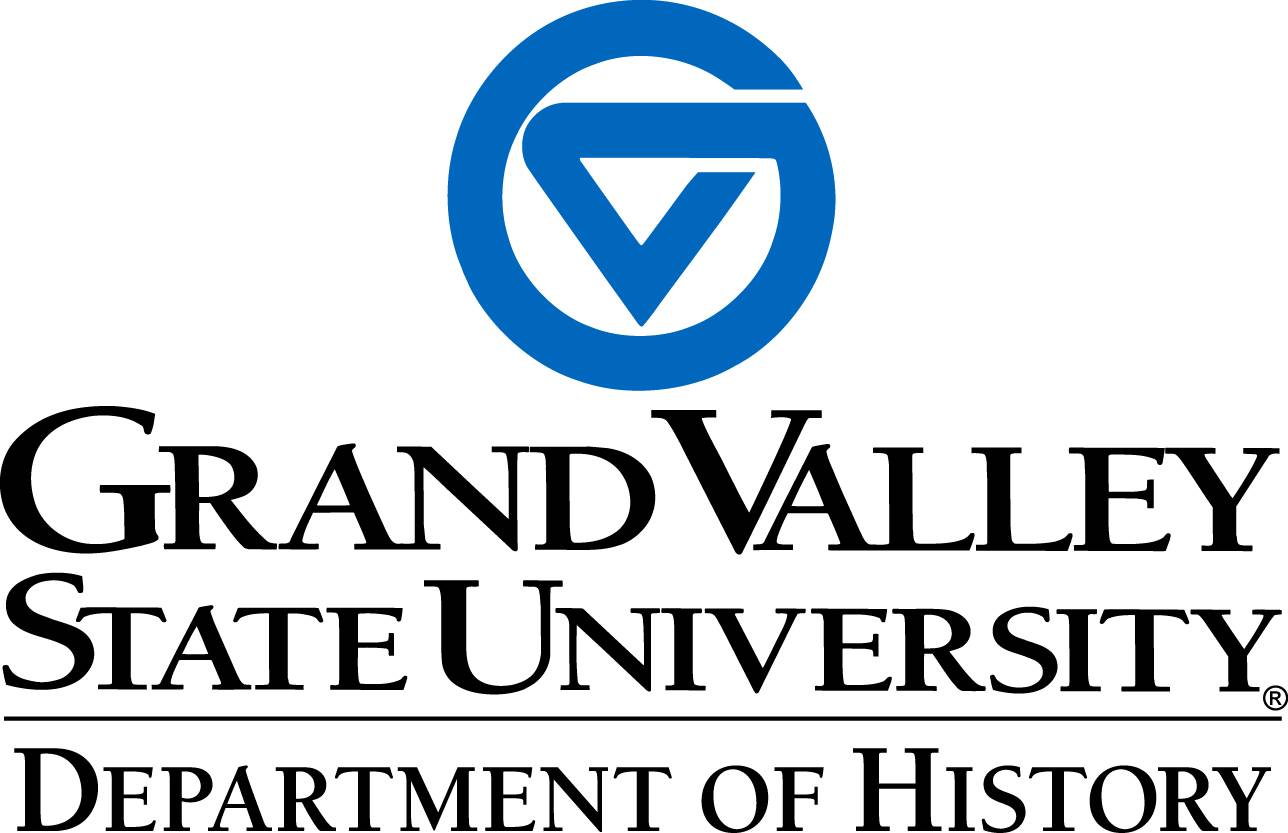The 2024 Great Lakes History Conference
Crossdisciplinary international conference
Intoxicated Warfare:
Psychoactive Substances, Violence and Trauma
September, 27–28, 2024, funded by Grand Valley State University.
Concept and organization: Professor Dr. Jason Crouthamel and PD PD Dr. Julia Barbara Köhne (Humboldt-University Berlin).
Location: Department of History, Grand Valley State University, Grand Rapids, Michigan.
Keynote speakers:
Prof. Edward Westermann (Texas A&M University, San Antonio)
Prof. Dessa K. Bergen-Cico (Syracuse University)
Prof. Peter Andreas (Brown University)
For further information, please contact: [email protected]
Since ancient times, drugs have been used in military warfare or other forms of armed conflicts in transcultural contexts in order to enhance fighting performance or manage its traumatic effects in creative ways. Psychoactive substances can be considered a crucial military tool in the context of a great number of wars, on various continents. These substances took on diverse and ever-changing functions within the ‘collective imaginary’ of communities, societies, peoples. The 2024 Great Lakes History Conference features a variety of wars in different times, and asks in what way, to what extent, and at whose costs pharmacological substances were consumed. It focuses on the numerous forms of drug usage and their multidirectional causes, aims and effects, including enhancement, stimulation, control, remedy, cover-up, escape, or numbing the side effects of perpetration or experience of violence (Łukasz Kamieński, Norman Ohler). In retrospect, the (mis-)use of drugs appears in various contexts of military activities, ranging from sites of ancient wars to modern warfare, the theatres of war in both world wars, in terrorist actions, and in recent and ongoing wars. Drug intoxication can be traced within fighting units under official military leadership as well as in association with genocidal structures, guerilla tactics, systems of policing, or in the form of private abuse dynamics, as well as (experimental) PTSD self-medication applied by veterans.
The particular functions that drugs performed depended on the question of who administered them (and if they were taken on demand, administered by force, or by free will or out of despair), before, during or after the combat mission/ battlefield―be it nicotine/ cigarettes, chewing tobacco, coffee/ tea/ caffeine, chocolate/ sugar, alcohol, cannabis/ hashish, steroids, barbiturates, or ‘harder’ drugs like (methamphetamines: Pervitin, or Captagon), cocaine, speed, opiates, heroin, morphine, psychedelic drugs (LSD/ ecstasy, mescaline/ mushrooms), etc. The various effects ranged from preparing soldiers to enter war (drill, disciplining, training, fitness), lifting morale, lowering the inhibition threshold and enabling extreme acts of violence (e.g., alcohol as cultural catalyst for hyper-masculine violence, Edward B. Westermann), strengthening of the fighting spirit and effectiveness, combat desire/ aggression/ combativeness/ ecstasy, the need to dehumanize the enemy, and initiating killing sprees (freeing of impulses/ intensifying irrationalities; “sensory overexertion,” as noted by Philip Zimbardo). Military and medical authorities used administered drugs to soldiers for a variety of purposes, including the calming of nerves, fighting fear, preventing the reluctance to fight, staving off exhaustion, sleepiness, hunger/ appetite, alleviating physical pain, coping with near-death-experiences, or homesickness, and boredom, as well as promoting mental escape, diversion, or relaxation and therapy after combat experiences. These experiences were sometimes associated with mental effects like amnesia, deindividuation, depersonalization, loss of control, as well as with scenes of human experimentation, or the concealing of human rights violations. It is the latter sort of applications that have been displayed in a variety of cultural artifacts, like ego-documents/ diaries, novels, and feature films depicting these activities. These sources might criticize asymmetrical hierarchies in the military or militant groups, patterns of obedience, strategies for subduing and (re-) programming soldiers, soldierly resistance, and speculating about the role of intelligence services and illegal kinds of warfare. Adding another dimension, the use of drugs and alcohol have also been connected with instances of sexual violence in the military (e.g., Tailhook scandals in the 1990s), where men in the navy/ army attacked women, and investigations often noted (or even blamed) drugs like alcohol.
Regardless of the types of military actions, and whether these actions are motivated by territorial, imperialistic, socioeconomic factors, or whether they are driven by propaganda and longings for power, or shaped by religion or other ideologies, soldiers are perceived to be confronted with extreme conditions during their deployment or fighting activities. They have to exceed not only physical but also psychological and moral limits (Joanna Bourke, Barbara Ehrenreich). Depending on the site of war, ‘attack’ and ‘defense’ require a high degree of concentration, strength, muscular power, speed, endurance, and constitution. In exceptional situations, soldiers are under extreme military influence, and enormous social pressures, taking on a double role by risking their own life (in proximity to one’s own death), and they are simultaneously defending the group they are representing, or the nation, fulfilling its more or less legitimate aims, in a situation which is often beyond the control of civil law. This is accompanied by enormous psychological stress and includes the need to cope with traumatizing experiences (loss of comrades or allies, feelings of helplessness, as well as shame, [survivor] guilt, etc.), and the negative psychological effects of killing other human beings (Robert J. Lifton).
As political scientist Peter Andreas wrote: “In the end, war will likely be the hardest of all habits to kick […, drugs and war are] making and remaking each other.” – Nevertheless, an experience of intoxication that is substance-induced is ultimately counterproductive and makes it more difficult to solve problems non-violently, to lower tensions between conflicting groups, to show humanity and empathy, to prevent fighting and killing, and to defuse perpetrator culture. Ultimately, the presence of intoxicating substances makes it more unlikely to replace warfare with diplomatic sophistication and peace-making activism.
Questions:
- How were drugs perceived as a means to temporarily stimulate, numb/narcoticize, mediate, transcend, in short, control the emotional economy of soldiers and their supervisors, as well as their consciousness/ perceptions, actions, behavior? How did drugs contribute to soldiers’ abilities to shift perspective in experiencing war, or reflect on it, in its aftermath (inspiration, mobilization, euphoria/ collective rapture, disinhibition)?
- How is the history of drugs in war interwoven with the history of class and social background: from elitist consumption and limited access to them, to the increasingly accessible cultivation of drugs and their usage, to today’s global access and mass consumption, including the legalization of drugs?
- Which (post-)colonial structures appear in the realm of drug use within the context of warfare? How can the topic of drugs in war be decolonized by including non-European and Western perspectives?
- What does the drug jargon, linguistic terms, and nicknames for drugs (e.g, “Blue 88,” “Panzerschokolade”, “Jihad pill,” “Rauschgift,” “pep pills,” “Uppers,” Ecstasy, Heroin, Cannabis, LSD, Crack, “doors of perception,” “trips,” etc.) tell about their perception among soldiers, and the particular context of war? Which of them were invented in which war contexts and war cultures and to what aim (commenting on transcendence of conscious vs. mind control; Jakob Tanner), and what does this language reveal about the culture of drugs and their relationship to violence?
- In what ways is ‘war as such’ constructed as functioning like a drug―as encoded in terms like “trigger happiness,” “killer high,” “getting blitzed,” “shooting mania,” “shooting up”, “ecstasy of war” (G.E. Partridge), etc.?
- Which religious dimensions can be traced with the history of stimulants in warfare: from spiritual and (quasi) religious encounters during warfare to the role that religious identity played in the use, to subjective and collective perceptions, and the validation of various drugs? To what degree do drugs enhance the spiritual-psychological dimensions of the war experience? How do religious beliefs and rituals supplant (or are replaced by) drug-induced experiences?
- How is drug (mis-)use gendered? How are female or LGBTQI+ soldiers associated with psychotropica, and how does this differ from male encodings of war-drugs? Are there particular ways in which drugs are administered and/ or (mis-)used within any particular gender (male, female, diverse/ all genders)?
- What about deaths as a result of drugs (intended, or not-intended overdose), drug addiction and its side effects, misuse in the aftermaths of war as a pathological feature? Or drug therapies against PTSD (like Cannabis, etc.)? How are suicide rates of veterans related to drug/ alcohol use?
- What can be said about the interrelation of drugs and human experimentation as part of the top-secret knowledge of militaries?
- How is the history of drugs in warfare intermingled with the civil attempts to decriminalize and legalize psychoactive substances?
- How were drugs used to end war (e.g., the Vietnam war, counterculture generation, ‘make love not war’), or to prevent it? How are drug cultures/ behaviors defined as a form of resistance to war in a variety of contexts? How is drug/ alcohol use seen as consistent with warfare?
The 2024 GLHC Program Will Be Available During Summer 2024
Accommodations are available through the Holiday Inn in Downtown Grand Rapids for a preferred rate. Their information can be accessed here. The hotel is in easy walking distance to the conference.
Further information about the GLHC, including membership and conference registration (when it becomes available) can be found at https://www.gvsu.edu/glhc/.




